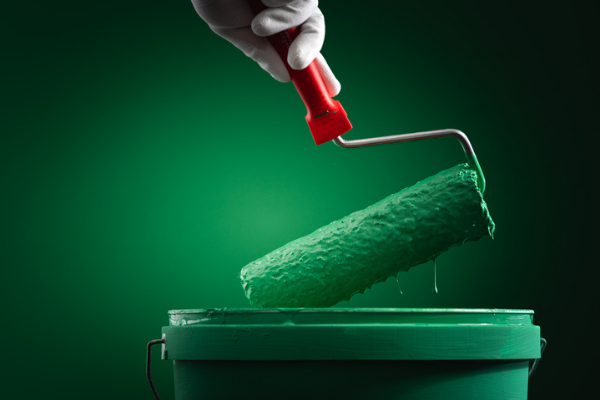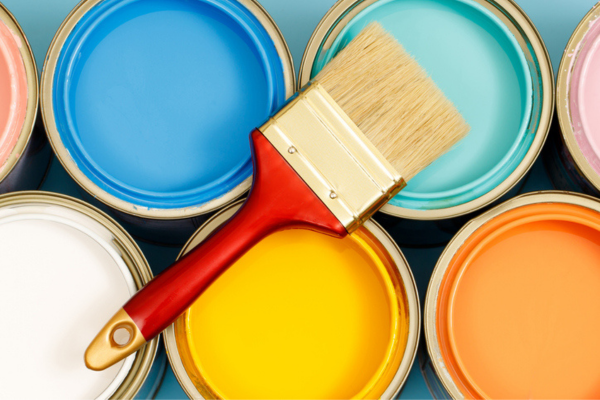
Key Takeaways:
- David Bem shares technological challenges associated with developing next-generation coatings
- Challenges of striking the right balance between keeping a strong core while building from positions of strength
- Bem reflects on PPG being awarded ACS Heroes of Chemistry
What technology trends are you following most closely (with an eye toward how they may impact the work of your PPG teams)?
One of the biggest opportunities within the coatings industry are technologies that enable and enhance the future of transportation. Through ongoing development of autonomous, connected, electric and shared vehicles, PPG has an opportunity to contribute to this mobility revolution. A car, autonomous or not, incorporates dozens of different coatings on the body, undercarriage, bumper, navigation screens and more, which help prevent scratching, reduce smudging and provide an aesthetically pleasing appearance for the owner. With the automotive industry pivoting to develop the latest and greatest technology and deliver on the future of mobility, society’s use of automobiles will also be shifting. Paints and coatings will play a role in this shift.
In addition to the shift in mobility, PPG will continue developing other next-generation coatings technologies. And some of these applications may be completely unexpected - paints that can cool the temperature of asphalt on a hot day to protect a puppy’s sensitive paws; coatings that can absorb sound or help reduce pollution; and stain that can be applied even on a cold, wet day.
When people talk about painting, they’re typically focused on beautifying a space in their home or making their mark on a new one. But next-generation paints and coatings will do much more. From added safety, to enhanced comfort or just an easier way to apply our products, paint can help improve our overall quality of life
What are the non-technical skills you most highly value on the part of PPG scientists?
Our global research & development team at PPG has a true spirit of innovation and invention. It is important for manufacturers like PPG to look beyond current market needs, and develop coatings that will serve future customer needs – needs they may not even recognize yet.
For example, we see profound changes coming in the transportation industry with the future of mobility. With the ongoing development of self-driving and autonomous vehicles, PPG has a strong opportunity to enable and enhance the future of transportation through next-generation coatings, including cathode coatings for electric-vehicle batteries, coatings that help self-driving cars detect other vehicles and infrastructure around them and anti-fingerprint coatings for interior vehicle applications.
By anticipating these changes and having an organization that is constantly looking for new opportunities, PPG will contribute to the future of change.
In a recent ACS Boss Talk, Patricia Hubbard, Senior VP and CTO at Cabot Corp., said the following: “This is the real challenge for Cabot and any company over the long term: How to strike the right balance between keeping a strong core while also building from positions of strength to progress into new areas. It’s hard to get right, but vitally important.” What’s your approach to tackling this challenge?
It is vitally important for coatings manufacturers like PPG to recognize their core strengths and continue to seek opportunities for growth and innovation. Within our science and technology organization, researchers spend part of their day-to-day exploring and researching new opportunities and applications for our paints and coatings, in addition to developing new technology. We call these test drills, and they have been foundational to many of our innovations. This allows PPG to continue developing our core competencies and meet current customer needs, while keeping an ear to the ground for future growth opportunities.
In a 7.2.19 article, the Wall Street Journal reported that PPG believes most of its future growth will come from the ‘higher-technology business of making sophisticated coatings for aircraft and other machines.’ What are some of the technological challenges associated with developing coatings for aircraft as opposed to, for example, your family room ceiling?
PPG’s breadth and depth of coatings know-how allows us to transfer key learnings and technology from one area of our business to another. For example, our PPG Timeless paint sold at The Home Depot provides excellent protection and premium features, including automotive-grade ultraviolet (UV) protection and gloss-retention technology trusted by leading automotive manufacturers. This ensures that the color that’s chosen is the color that stays for years to come.
Another example is the Liquid Nails brand’s Fuze*It All-Purpose Construction Adhesive, which is formulated with a proprietary hybrid-polymer blend for best-in-class adhesion. With two times the strength of fasteners alone, it bonds nearly all materials in any weather conditions, including temperatures ranging from -40 F to 300 F, and on surfaces that are dry, frozen or wet. This formula borrows technology from PPG’s aerospace sealants business.
When you reflect on the resources at your disposal in 2019 to design and produce sophisticated coatings for aircraft, what goes through your mind when you think about how scientists and engineers – using 60s’ technology – successfully developed protective coatings for Apollo 11’s Command Module Columbia, and the Lunar Module Eagle?
The ingenuity of the Apollo program was amazing. The team was faced with many unknowns, so they had to considerably over-engineer many aspects of the technology. We have learned so much from this mission. Since the launch, I am certain scientists and engineers would do many things differently today. As we now know and understand the space environment much better, we have adapted and considerably improved coatings capabilities. For example, the weight of paint on the rockets would be considerably lower than what was used in the 60s thanks to lightweight coatings technology.
Of note, PPG recently completed a Colorful Communities project to revitalize the Saturn V rocket replica at the U.S. Space & Rocket Center, in commemoration of the 50th anniversary of the Apollo 11 moon landing. The project brought together more than 150 volunteers, and PPG provided approximately 340 gallons of specialized paint to complete the project.
Chemists and chemical engineers operate in a dynamic and challenging workplace, particularly in a company such as PPG. In light of this, what advice do you have for scientists to maximize their ability to advance their careers, and the interests of the companies they support?
I encourage those working in science and technology to maintain a curious, inventor mentality. One term that I impress upon those within PPG’s global S&T teams is, “fail fast.” This mentality allows our teams to identify new opportunities, take risks and feel comfortable with trial and error.
How have your parents influenced your leadership style?
I had great role models. My parents taught me how important passion and continuous learning are, and I try to apply this to myself and my organization. As the owner and CEO of her own company, my mother was very progressive on diversity and advocated for women in the workplace. My brothers also taught me how to both lead and compromise.
What challenges do women chemists encounter in the workplace that men largely don’t experience? What can the chemical industry do to make the workplace more welcoming and rewarding for women?
One of PPG’s greatest strengths is the diversity of our people, who represent wide-ranging nationalities, cultures, languages, religions, ethnicities, lifestyles, and professional and educational backgrounds. Their unique perspectives enable us to meet challenges quickly, creatively and effectively, providing a significant competitive advantage in today’s global economy.
Our business and functional leaders set goals related to diversity and monitor progress on a regular basis. In Europe, for example, we have a focused initiative to hire, develop and retain female talent. Actions taken in 2018 included ensuring there is a focus on females when hiring, having women make up 50 percent of the candidate slate for promotions and conducting an equal pay review.
In 2018, 20% of PPG’s top management positions were held by women, with a steady increase in female representation of total workforce. However, women comprise manufacturing's largest pool of untapped talent. To fill the skills gap, we need to empower women to explore manufacturing, from the plant floor to the boardroom, from engineering and R&D to the trades, for a successful career in manufacturing.
PPG was recently awarded an ACS Heroes of Chemistry award for the development of an automotive paint system known as B1:B2™ Compact Process. Can you briefly explain how this is different from the traditional painting process? What were some of the challenges PPG faced in deploying the new process at customer sites?
In an earlier version of the B1:B2 compact process, we were able to identify and correct challenges in application, color control, light transmission and more. Through trial, error and ongoing customer feedback, this initial launch informed adjustments, including ensuring control of film thickness and therefore the development of a robotic application process that is used today.
Today, the B1:B2 Compact Paint System enables customers to reduce the number of steps necessary to paint a vehicle by eliminating the primer layer, therefore removing the need for a dedicated primer booth and all related processing. In the coatings system, the B1 layer provides primer, filling, chip resistance and durability protection, while the B2 layer provides color and additional durability. Both layers are applied wet-on-wet and do not require a baking or heated drying process in between. The B1:B2 Compact Paint System generates substantial savings in capital and operating costs for automotive manufacturers by requiring a smaller paint shop footprint, reducing energy consumption and increasing overall process efficiency.
If Michelangelo, daVinci and others from the 15- 16th century had access to 21st century quality paints, in what major ways might it have changed things for those artists, and the paintings they left behind?
If Michelangelo and daVinci had access to next-generation paints and coatings, their artwork likely would have been more vibrant and wear-resistant. At PPG, we develop coatings that can be matched to virtually any color under the sun, and paints that can withstand thousands of scrubs, scratches and any kind of weather.

Dr. Bem is Vice President of Science and Technology and Chief Technology Officer for PPG. Prior to joining PPG in 2015, he spent eight years at Dow Chemical Company in a number of research and development roles, most recently as Vice President, Research and Development Consumer Solutions and Infrastructure Solutions, and also worked in research and development roles at Celanese Corporation and UOP/Honeywell International, Inc.
Bem holds a bachelor’s degree in chemistry from West Virginia University and a Ph.D. in inorganic chemistry from the Massachusetts Institute of Technology. Bem is active with many industry organizations and serves on the Board of Directors of Brady Corporation as well as the Pittsburgh Carnegie Science Center.
This article has been edited for length and clarity. The opinions expressed in this article are the author's own and do not necessarily reflect the view of their employer or the American Chemical Society.
Copyright 2019 American Chemical Society (All Rights Reserved)







